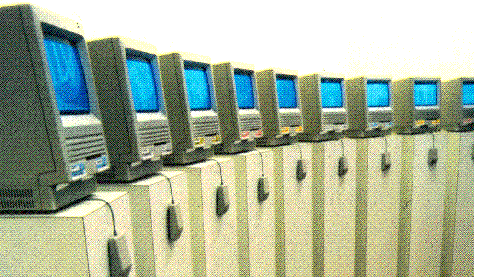The memories of objects attract the attention of the viewers by their binary representation which are displayed directly on the computer screen.
YES corresponds to the binary number 1 in the computer's memory,
NO corresponds to the binary number 0.
Latent memory or active memory, memory of the computer or memory of the viewer... where is the true memory of the object located?

10 computers are arranged in parallel in the form of an arc, opening out towards the viewers.
Each machine presents the contents of a memory, from 'le dessus de tabouret et la fourche' by Duchamp to 'B/FB' by Lavier.
The memory fragments are displayed on the screens in the form of 0 and 1 gradually with the reading of the memory.
state 1: latent memory (general state)
The memory is displayed in silence, the viewer questions the memory by pressing the button on the mouse, the memory responds YES for 1 and NO for 0.
state 2: active memory (for 8 minutes every hour + 16 minutes, every hour + 32 minutes, every hour + 48 minutes)
The memory is displayed on the computer screen and sends the sound YES for 1 and NO for 0. The 10 memories display their contents and speak successively beginning with memory n°1 to memory n°10.
The process ends after 8 minutes.
The viewer will be attentive to:
- the simultaneity of sounds, when all the units say YES or NO
- the gaps of sounds, rearrangements, rhythms of memories..
The viewer may stop the sound and accelerate the sequence by pressing on the button of the mouse.
>>>> Bernard Demiaux